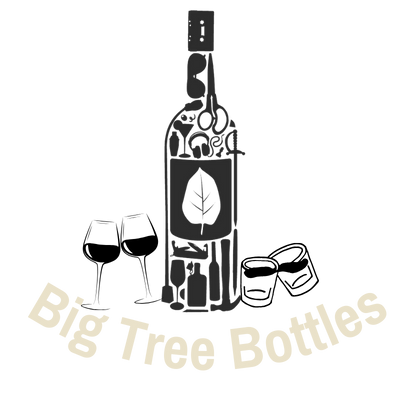There is no shortage of misinformation circulating about wine. Orange wine is not made from oranges, Riesling can be bone dry, and the color of rosé has nothing to do with how sweet it is.
Some of our customers have confided in us about troubling experiences they've had with rosé. We believe wine should be synonymous with celebration and relaxation. To most, rosé is an indicator of warm weather and playfulness. Some distrust has built up around this style of wine because some rosés can also drink as overly sweet for those that don't love a fruit forward wine.
Trends have created the false mysticism that dark rosés are always sweeter than their pale counterparts. Sweet wine styles like Italian Moscato, Portuguese Mateus and American White Zinfandel may have contributed to dark rosés' bad image.
These styles do not define dark rosés! In fact, most dark rosés taste nothing like this. We have not a single thing against the pale ballet pink rosés of Provence. We know they’re delicate and quaffable crowd pleasers that can virtually pair well with anything. We have some that we adore. But, a pale color is not an indicator of quality by any technical standards. In fact, a light colored rosé is sometimes just the result of a short maceration period (the amount of time the skin stays on the grapes during fermentation) or low phenolics in the skins which is what gives grapes their color.
A longer maceration period doesn’t just give wine more color. It also makes the wine more tannic, which is another thing people associate with dryness in wine. Think of drinking a strong black tea. The dry feeling left in your mouth are tannins. The same image can be applied to wine. The longer the grapes stay with their skins, the more tannic and dry they become. So, pretty much the opposite of a pale salmon rosé.
Below are a list of some of our dark(er) rosés we hope you will consider trying.

Château de Trinquevedel Tavel $22
57% Grenache, 11% Cinsault, 15% Clairette +
Tavel is the only recognized region in France dedicated entirely to rosé. The same stones called galets rouléts that have made Chateauneuf-du-Pape famous for quality can be found in the vineyards at Trinquevedel. While this appellation has enjoyed fame and prestige in the past, people are turning their noses up at its dark colored rosés today. This wine has flavors of raspberries, blackberries, cassis and spice with very soft tannins. While it is a rich wine, it clocks in at 13.5% ABV and no residual sugars can be detected. Go against the trends and give this OG rosé a try with rich mushrooms or roasted meats.

Weingut Pittnauer "Konig" Rosé $20
100% Zweigelt
Similar to Pinot Noir, Zweigelt is one of the lightest and driest red varietals. Rosés of Zweigelt can sometimes be as light as Provecal styles, but this one gets its dark color from whole cluster fermentation. Naturally made rosés are more likely to boast darker flavors because of minimal intervention from the winemakers. This wine is organic, biodynamic and 100% sulfur free. There's a big bouquet of fruit on the nose and front palate of this wine, but it gets spicy in the middle and finishes bone dry with notes of white pepper and pink peppercorns. A perfect afternoon roof wine.
 Yetti & the Kokonut "B'Rose" $32
Yetti & the Kokonut "B'Rose" $32
Wines from this Southern Australian producer are pretty mysterious. This cuvée contains Cabernet Franc which gives this wine its red fruited briny quality. Joining the blend is Red Semillon (or Semillon Gris) a red mutation of the otherwise white grape. The juice from this mutation of the varietal is naturally pink. A smattering of skin contact Verdelho fills out this juicy wine with some tannic and acidic structure. It's a bit of a doozy but, with flavors of sour Bing cherries, apricots and blood orange, it's definitely not sweet. The vegetal brininess in this wine pairs well with oysters or hard cheeses like Pecorino.

Beaujolais has been getting the love for its light, bright, acidic and dry natural red wines. It's the same for this rosé of Gamay from Legny in Southern Beaujo. Nathalie uses more refined Burgundian techniques to produce a silky and refined rosé of complex melon and stone fruit while maintaining the freshness this region is known for. Although it's delicious, this is not meant to be chugged. This is one of our favorite rosés this season because it made us button up a collar and pay attention to it's genuine flavors. It's cranberry color is the result of natural wine making: nothing added, nothing taken away--especially not color.
+++ More! We hope you'll try something new with us soon :) xoxo, BTB

